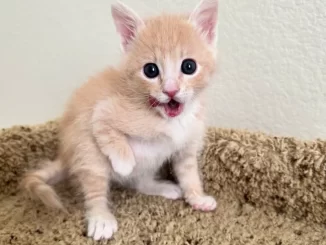
Reproduction is one of nature’s most fascinating phenomena, showcasing a diverse range of strategies and adaptations across the animal kingdom. Among the myriad of reproductive behaviors, the birthing processes of rabbits and seahorses stand out due to their distinct approaches and unique biological mechanisms. This article delves into the reproductive cycles of these two intriguing species, highlighting their remarkable methods of bringing new life into the world.

Rabbits: A Familiar Scene of Motherhood
Rabbits, often cherished as pets or admired in the wild, exhibit a reproductive process that is both straightforward and efficient. Female rabbits, known as does, are renowned for their high reproductive rates. They possess a remarkable ability to conceive shortly after giving birth, a trait that contributes to their prolific nature.

The birthing process, known as kindling, is a critical period for a doe. Prior to giving birth, a doe will build a nest using fur plucked from her own body, alongside grasses and other soft materials. This nest provides a warm and secure environment for the newborn kits. When the time arrives, the doe typically delivers her kits in a relatively short span, often between 30 to 60 minutes.

Each litter can consist of anywhere from 3 to 12 kits, depending on the rabbit’s age, health, and environmental conditions. The kits are born blind, deaf, and hairless, relying entirely on their mother for warmth and nourishment. The doe will nurse her young only once or twice a day, a practice that ensures the kits grow quickly while minimizing the risk of predators locating the nest.
Seahorses: A Unique Twist on Reproduction
In stark contrast to the familiar scene of rabbit birthing, seahorses offer a truly remarkable reproductive strategy. Seahorses are one of the few species where males play a significant role in gestation. During reproduction, the female seahorse deposits her eggs into a specialized brood pouch located on the male’s abdomen. This pouch provides a protective environment where the eggs are fertilized and incubated.

The male seahorse then carries the developing embryos in his pouch for several weeks, during which he supplies them with oxygen and regulates the salinity of the environment to ensure their optimal development. Once the embryos are ready to emerge, the male undergoes a unique birthing process. He expels the fully-formed baby seahorses, known as fry, from his pouch in a series of contractions. This process can last from a few minutes to several hours, depending on the number of fry.


Unlike rabbit kits, baby seahorses are miniature versions of their parents and are immediately independent, though they face significant challenges in the open water where they must fend for themselves.

Conclusion
The reproductive strategies of rabbits and seahorses underscore the incredible diversity of life on Earth. While rabbits exemplify rapid reproduction and nurturing through direct maternal care, seahorses highlight a fascinating role reversal where males assume the role of carrying and giving birth. These contrasting approaches not only reveal the adaptability of species to their environments but also remind us of the intricate and often surprising wonders of nature’s reproductive strategies.


